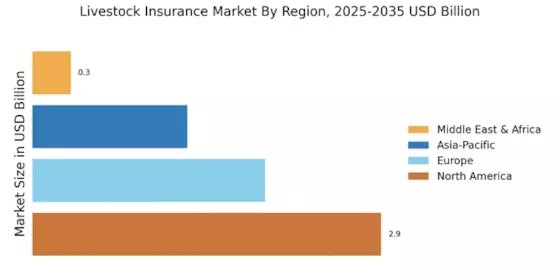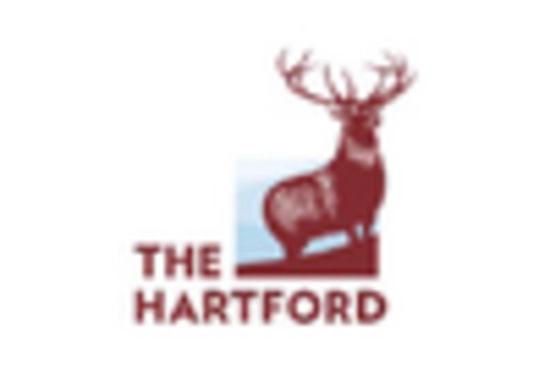Climate Change Impact
Climate change poses significant challenges to livestock farming, influencing the Livestock Insurance Market. Variability in weather patterns, including extreme temperatures and unpredictable rainfall, can adversely affect livestock health and productivity. Reports indicate that climate-related events have led to increased mortality rates among livestock, prompting farmers to seek insurance as a safeguard against potential losses. The Livestock Insurance Market is responding to these challenges by offering tailored policies that address climate-related risks. As awareness of climate change's impact on agriculture grows, the demand for insurance products that cover these specific risks is expected to rise, thereby driving market expansion.
Increasing Livestock Population
The rising livestock population is a pivotal driver for the Livestock Insurance Market. As demand for meat, dairy, and other animal products escalates, farmers are increasingly investing in livestock. According to recent data, the livestock population has shown a steady increase, with estimates suggesting a growth rate of approximately 2.5% annually. This expansion necessitates adequate insurance coverage to mitigate risks associated with disease outbreaks, accidents, and natural disasters. Consequently, the Livestock Insurance Market is likely to experience heightened demand as farmers seek to protect their investments. The increasing awareness of the financial implications of livestock loss further propels the need for comprehensive insurance solutions, thereby fostering growth in the market.
Government Support and Subsidies
Government support and subsidies play a crucial role in shaping the Livestock Insurance Market. Many governments recognize the importance of livestock farming to food security and rural economies, leading to the implementation of policies that promote insurance uptake. Subsidies for insurance premiums can significantly reduce the financial burden on farmers, encouraging them to invest in coverage. Recent initiatives have shown that countries with robust government support for livestock insurance experience higher participation rates among farmers. This trend suggests that as governments continue to back the insurance sector, the Livestock Insurance Market will likely expand, providing farmers with the necessary tools to manage risks effectively.
Rising Awareness of Risk Management
There is a growing awareness among farmers regarding the importance of risk management, which significantly influences the Livestock Insurance Market. As agricultural practices evolve, farmers recognize that unforeseen events can lead to substantial financial losses. This awareness has led to an increased uptake of insurance products designed to protect against various risks, including disease outbreaks and natural disasters. Market data suggests that the penetration rate of livestock insurance has increased by approximately 15% over the past few years, indicating a shift in mindset towards proactive risk management. Consequently, the Livestock Insurance Market is poised for growth as more farmers seek to secure their livelihoods through comprehensive insurance solutions.
Technological Advancements in Agriculture
Technological advancements in agriculture are transforming the Livestock Insurance Market. Innovations such as precision farming, data analytics, and remote monitoring systems enable farmers to manage their livestock more effectively. These technologies not only enhance productivity but also provide valuable data that can be used to assess risks and determine insurance premiums. For instance, the integration of IoT devices allows for real-time monitoring of livestock health, which can lead to timely interventions and reduced losses. As farmers increasingly adopt these technologies, the Livestock Insurance Market is likely to see a surge in demand for insurance products that leverage data-driven insights, thereby enhancing risk management strategies.


















Leave a Comment